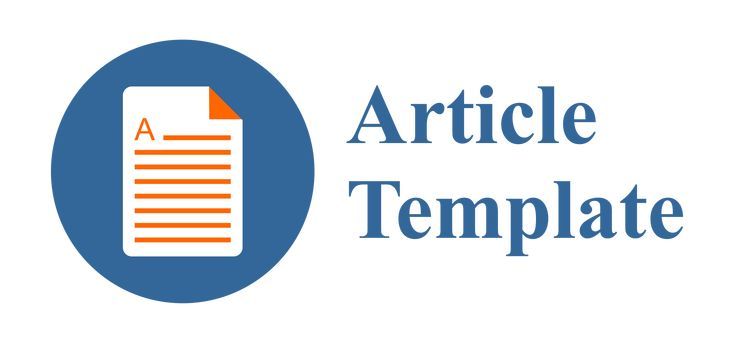Sistem Prediksi Keuntungan Influencer Pengguna E-Commerce Shopee Affiliates menggunakan Metode Naïve Bayes
DOI:
https://doi.org/10.29408/edumatic.v6i2.6787Keywords:
e-commerce, influencer, naive bayes, prediction system, shopee affiliatesAbstract
Shopee Affiliate is one of Shopee's e-commerce programs to make it easier to market products. However, with the popularity of this program, there are still many people who do not know the advantages of this program. As a result, in this e-commerce, not all sellers benefit (loss) from the products sold. In order to avoid the problem of losses on marketed products, this study aims to produce a profit prediction system for shoppe affiliate e-commerce users. To build the system, this research uses the waterfall method which is used to complete the prediction system. The first stage is to collect data from social media and references related to the prediction system, then design a prediction system, after carrying out the process of system creation and implementation and testing. The test uses blackbox to test the system and accuracy test to determine the level of accuracy of this system. The result of this prediction system is to gain knowledge in the form of profit rate patterns of influencers of shopee affiliate e-commerce users. Testing the accuracy of the system built has a very good performance with a percentage of 100%. So that the profit prediction of shopee affiliate e-commerce users is feasible to be implemented. With this system, it is hoped that the community will be able to increase sales at e-commerce shopee.
References
Alghifari, F., & Juardi, D. (2021). Penerapan Data Mining Pada Penerapan Data Mining Pada Penjualan Makanan Dan Minuman Menggunakan Metode Algoritma Naïve Bayes. Jurnal Ilmiah Informatika (JIF), 9(2), 75–81. https://doi.org/10.33884/jif.v9i02.3755
Anam, M. K., & Anwar, R. (2020). Penerapan Aplikasi Pendukung Touring Pada Komunitas Motor Berbasis Android. Edumatic: Jurnal Pendidikan Informatika, 4(1), 1–10. https://doi.org/10.29408/edumatic.v4i1.1980
Anam, M. K., Pikir, B. N., Firdaus, M. B., Erlinda, S., & Agustin. (2021). Penerapan Naïve Bayes Classifier, K-Nearest Neighbor dan Decision Tree untuk Menganalisis Sentimen pada Interaksi Netizen dan Pemeritah. Matrik: Jurnal Manajemen, Teknik Informatika, Dan Rekayasa Komputer, 21(1), 139–150. https://doi.org/10.30812/matrik.v21i1.1092
Andriyanti, E., & Farida, S. N. (2022). Pengaruh Viral Marketing Shopee Affiliate, Kualitas Produk, Dan Harga Terhadap Minat Beli Konsumen Shopee Indonesia (Studi Pada Generasi Z Pengguna TikTok di Sidoarjo). Jurnal Forum Bisnis Dan Kewirausahaan, 11(2), 228–241.
Darwis, D., Siskawati, N., & Abidin, Z. (2021). Penerapan Algoritma Naive Bayes Untuk Analisis Sentimen Review Data Twitter Bmkg Nasional. Jurnal Tekno Kompak, 15(1), 131-145.. https://doi.org/10.33365/jtk.v15i1.744
Dennis, M., Rahmaddeni, R., Zoromi, F., & Anam, M. K. (2022). Penerapan Algoritma Naïve Bayes Untuk Pengelompokkan Predikat Peserta Uji Kemahiran Berbahasa Indonesia. Jurnal Media Informatika Budidarma, 6(2), 1183–1190. https://doi.org/10.30865/mib.v6i2.3956
Dihni, V. A. (2022). 10 E-Commerce dengan Pengunjung Terbanyak Kuartal I 2022. Databoks.Katadata.Co.Id. https://databoks.katadata.co.id/datapublish/2022/07/19/10-e-commerce-dengan-pengunjung-terbanyak-kuartal-i-2022
Hasanah, Q., Andrianto, A., & Hidayat, M. A. (2018). Sistem Informasi Posyandu Ibu Hamil dengan Penerapan Klasifikasi Resiko Kehamilan Menggunakan Metode Naïve Bayes. Berkala Sainstek, 6(1), 1–9. https://doi.org/10.19184/bst.v6i1.7554
Indraswari, N. R., & Kurniawan, Y. I. (2018). Aplikasi prediksi usia kelahiran dengan metode naive bayes. Simetris: Jurnal Teknik Mesin, Elektro dan Ilmu Komputer, 9(1), 129-138. https://doi.org/10.24176/simet.v9i1.1827
Jamaris, M., Saputra, H., Anam, M. K., Andesa, K., & Rahmaddeni. (2022). Sistem Marketplace Pencarian Lapangan Futsal Menggunakan Metode Haversine Berbasis Android. Jurnal Ilmiah Komputer Grafis, 15(1), 53–65. https://doi.org/10.51903/pixel.v15i1.712
Karsito, & Susanti, S. (2019). Klasifikasi Kelayakan Peserta Pengajuan Kredit Rumah Dengan Algoritma Naive Bayes Di Perumahan Azzura Residencia. SIGMA–Jurnal Teknologi Pelita Bangsa, 9(3), 43–48.
Lianda, D., & Atmaja, N. S. (2021). Prediksi Data Buku Favorit Menggunakan Metode Naïve Bayes (Studi Kasus: Universitas Dehasen Bengkulu). Pseudocode, 8(1), 27-37. https://doi.org/10.33369/pseudocode.8.1.27-37
Mahardhika, A. A., Saptono, R., & Anggrainingsih, R. (2015). Sistem Klasifikasi Feedback Pelanggan Dan Rekomendasi Solusi Atas Keluhan di UPT Puskom Uns Dengan Algoritma Naïve Bayes Classifier dan Cosine Similarity. Jurnal ITSMART, 4(1), 36–42. https://doi.org/10.20961/its.v4i1.1806
Natarina, R. A. E., & Anugrah Bangun, C. R. (2019). The Use of Affiliate Marketing in Improving Pegipegi Sales. Jurnal The Messenger, 11(2), 157–167. https://doi.org/10.26623/themessenger.v11i2.1210
Nurmayanti, W. P. (2021). Penerapan Naive Bayes dalam Mengklasifikasikan Masyarakat Miskin di Desa Lepak. Geodika: Jurnal Kajian Ilmu Dan Pendidikan Geografi, 5(1), 123–132. https://doi.org/10.29408/geodika.v5i1.3430
Prabowo, F. E., & Kodar, A. (2019). Analisis Prediksi Masa Studi Mahasiswa Menggunakan Algoritma Naïve Bayes. Jurnal Ilmu Teknik Dan Komputer, 3(2), 147-151. https://doi.org/10.22441/jitkom.2020.v3.i2.008
Pratiwi, R. W., Yusuf, D., & Nugroho, S. (2016). Prediksi Rating Film Menggunakan Metode Naïve Bayes. Jurnal Teknik Elektro, 8(2), 60–63.
Putra, R. S., Agustin, W., Anam, M. K., Lusiana, L., & Yaakub, S. (2022). The Application of Naïve Bayes Classifier Based Feature Selection on Analysis of Online Learning Sentiment in Online Media. Jurnal Transformatika, 20(1), 44. https://doi.org/10.26623/transformatika.v20i1.5144
Rezekika, D. (2020). Penerapan Algoritma Naïve Bayes Untuk Memprediksi Penjualan Spare Part Sepeda Motor. Jurnal Pelita Informatika, 8(3), 326–329.
Susanti, M., & Aifan, A. (2019). Game Perakitan Komputer Berbasis Mobile Menggunakan Metode Finite State Machines (FSM). Jurnal Teknologi dan Open Source, 2(1), 24-33. https://doi.org/10.36378/jtos.v2i1.139
Waziana, W., Herdiyan Saputra, R., Yolanda Sari, N., kasmi, & Aulia, D. (2022). Pemanfaatan E-Commerce Shopee Sebagai Upaya Peningkatan Ekonomi Ibu-Ibu PKK Pelaku Bisnis. NEAR: Jurnal Pengabdian Kepada Masyarakat, 1(2), 107–122.
Wijaya, H. D., & Dwiasnati, S. (2020). Implementasi Data Mining dengan Algoritma Naïve Bayes pada Penjualan Obat. Jurnal Informatika, 7(1), 1-7. https://doi.org/10.31294/ji.v7i1.6203
Downloads
Published
How to Cite
Issue
Section
License
All articles in this journal are the sole responsibility of the authors. Edumatic: Jurnal Pendidikan Informatika can be accessed free of charge, in accordance with the Creative Commons license used.

This work is licensed under a Lisensi a Creative Commons Attribution-ShareAlike 4.0 International License.




